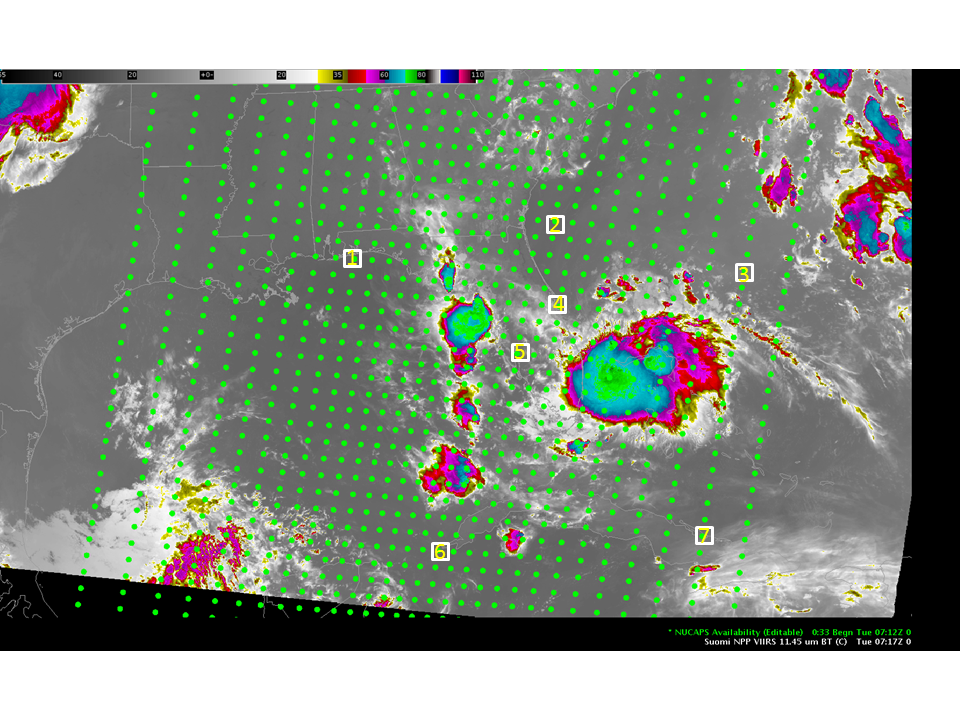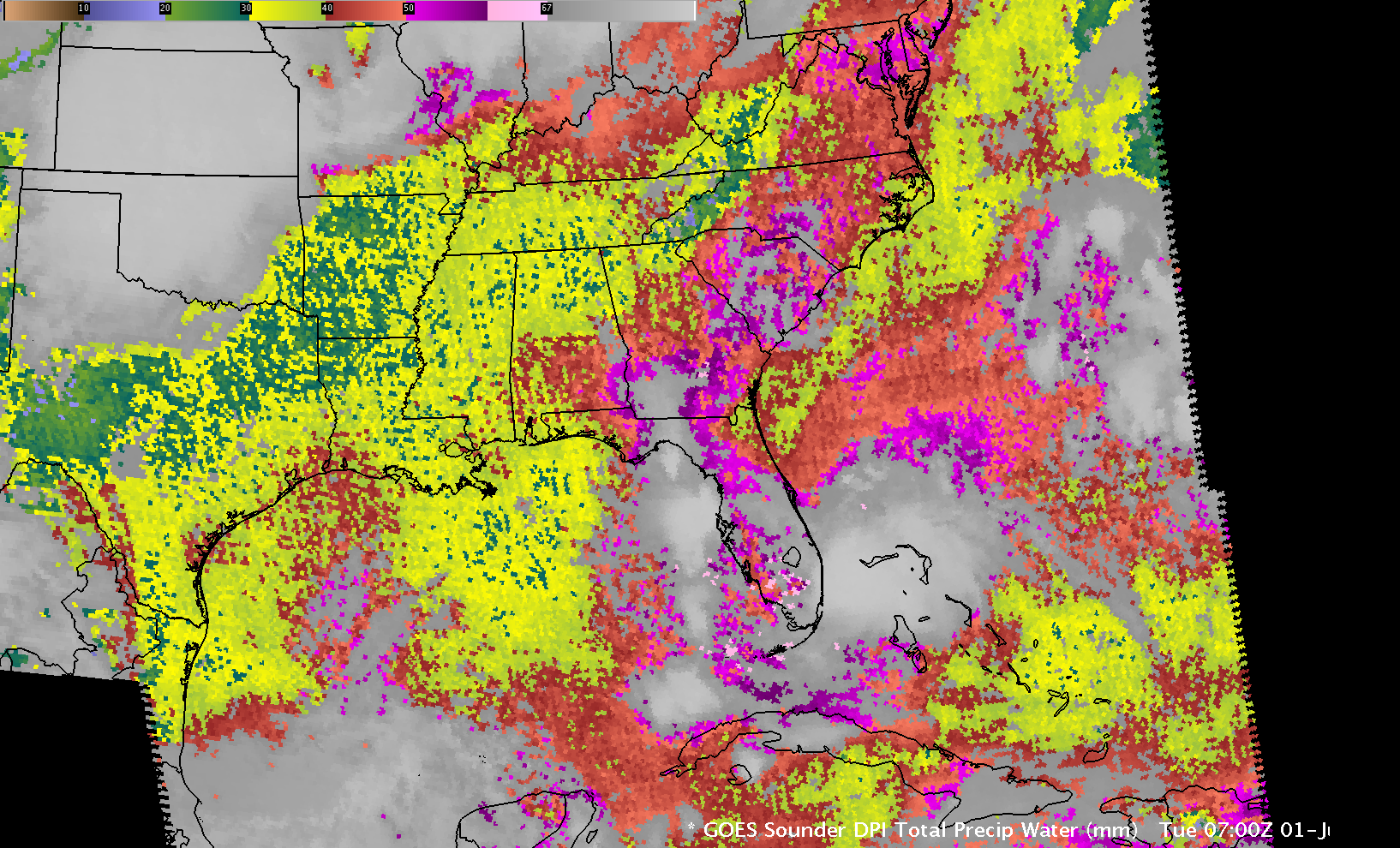NUCAPS soundings near a Tropical Disturbance

Suomi/NPP 11.35 µm infrared channel, 0717 UTC on 1 July 2014 and NUCAPS sounding locations in green (click to enlarge)
Suomi/NPP overflew the developing tropical depression #1 (now Tropical Storm Arthur) east of Florida early in the morning on July 1st. The CrIS and ATMS instruments on board S/NPP provide data for NUCAPS soundings that are routinely distributed to AWIPS II. The image above is an overlay of the 11.35 µm infrared imagery with the sounding locations plotted as green dots. Seven sounding locations are indicated on the image above (Here is the image without the seven sounding locations) How well do NUCAPS soundings represent the tropical atmosphere that is supporting the development of Arthur?
The 7 soundings indicated in the plot above are: 1 (Just south of Pensacola, FL), 2 (Off the coast of Georgia), 3 (northeast of Arthur in the tropical Atlantic), 4 (Cape Canaveral), 5 (north of Tampa Bay), 6 (the western tip of Cuba) and 7 (northeastern Cuba).
How does Precipitable Water from the NUCAPS soundings compare to observations from other satellite-based systems? GOES Sounder DPI TPW from 0800 UTC shows values around 50 mm over interior the southeast United States, and over the tropical Atlantic to the northeast of the tropical system. A corridor of lower values, around 30-35 mm, extends northeast of Jacksonville, FL. Smaller values (30-40 mm) also extend southeastward from the lower Mississippi River valley into the Gulf of Mexico. A similar pattern in the precipitable water is evident in the blended product, here. Precipitable water values from the NUCAPS soundings appear, for this case, to be too low. The value at Cape Canaveral (point 4), for example, is 1.59″ (40 mm, versus close to 50 mm from the Sounder and the Blended Product); off the coast of Georgia (point 2), 1.30″ (33 mm vs. close to 41 mm from the Sounder and Blended Product); south of Pensacola (point 1), 1.25″ (31 mm vs. 35 mm from the Sounder and the Blended Product); north of Tampa Bay (point 5), 1.46″ (37 mm vs 47 mm from the Sounder and the Blended Product); northeast of the tropical system (point 3), 1.84″ (47 mm vs 49 mm from the Sounder/Blended Product); western Cuba (point 6), 1.70″ (43 mm, similar to the 44 mm from the Sounder/Blended Product); and northeast cuba (point 7), 1.22″ (31 mm vs. 39 from the Sounder and 34 from the Blended Product). The lowest 3 kilometers of the atmosphere (where most of the moisture resides) is the most difficult part for a satellite-based sounding, but there do appear to be differences between the two satellite-based sounding products (GOES and NUCAPS) in this case.


